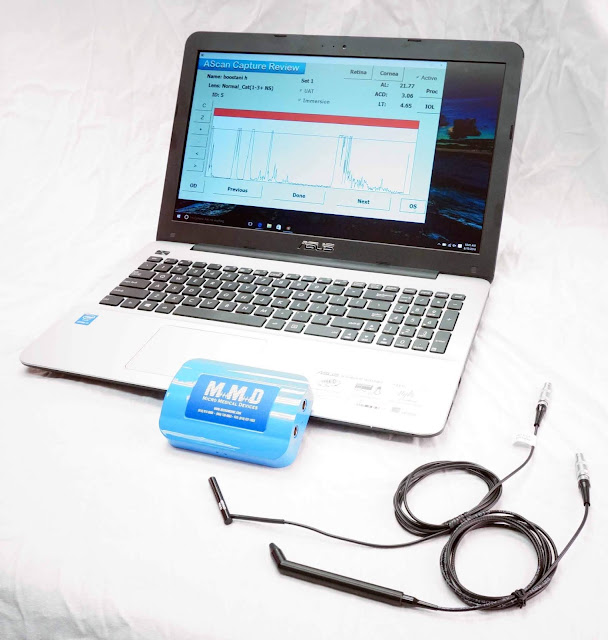A-scan ultrasound biometry or Amplitude-scan which is popularly known as A-scan is a traditional type of diagnosis used for testing the eyes. It is commonly done in optometry or ophthalmology practices. The A-scan helps in determining the data of the length of the eye, which is used to diagnose common disorders of the eyesight. It is most commonly used to check the eye length and calculate the power of the intraocular lens.
The Utility of The A-Scan Diagnosis
In all the total refractive power of the eye is nearly 60 diopters. This total refractive power is provided partly by the cornea and partly by the lens. 40 diopters is provided by the lens, and the crystalline lens provides 20 diopters. After the surgical removal of the cataract, the original lens is replaced by the artificial lens. The power requirement of the lens is calculated with the help of data provided by A-scan.
Calculation of Corneal Power
The length of the eye is measured by with A-Scan Biometer, and the corneal power is calculated with the help of process known as Keratometry. These figures are placed in a simple formula, and the power of intraocular needed is calculated. There is not just a single formula for this, but there are many such formulas which are used to determine different features of the eyes. However, all the information extracted out of the formula might not be valid for medical use.

Other Utilities of A-Scan
The main use of A-san is to determine the power of the intraocular lens. Apart from this important use includes the determination of the size of the masses present in the eye. The ultrasound features and the type of masses present in the eye are also determined. This is known as Quantitative A-scan.
New Generation A-Scan Devices
The instruments which are used to determine the A-scan data need to come into contact directly with the cornea. When it was used to over many patients, there were chances of eye infections and spreading of eye diseases. However, nowadays there are A-scan devices are available in the non-contact instrument forms. They are the new generation A-scan instrument, and they have disposable covers which come in the actual contact of the eyes and have lesser chances of infections and spreading of eye diseases.
Features To Look For in a Good A-Scan Device
If you are looking for a good device you need to check out with the following features:
• Weight
• Resolution
• Interface
• Dimensions
• IOL Formulas
• Display
• Screen Size
• Power use
• Measurement Range
• Zoom
• Printer
• Scan Angle
• Scan deepness
• Total Gain Control (TGC)
• Scale
• Repeatability
The A-scan instruments are also available in various forms, different shapes, and sizes. As the new generation of A-scan devices has arrived, they have become lighter and portable. They are comfortable to carry, easy to use and give accurate scan. There has also a visible demarcation in the precision of the data.

No comments:
Post a Comment